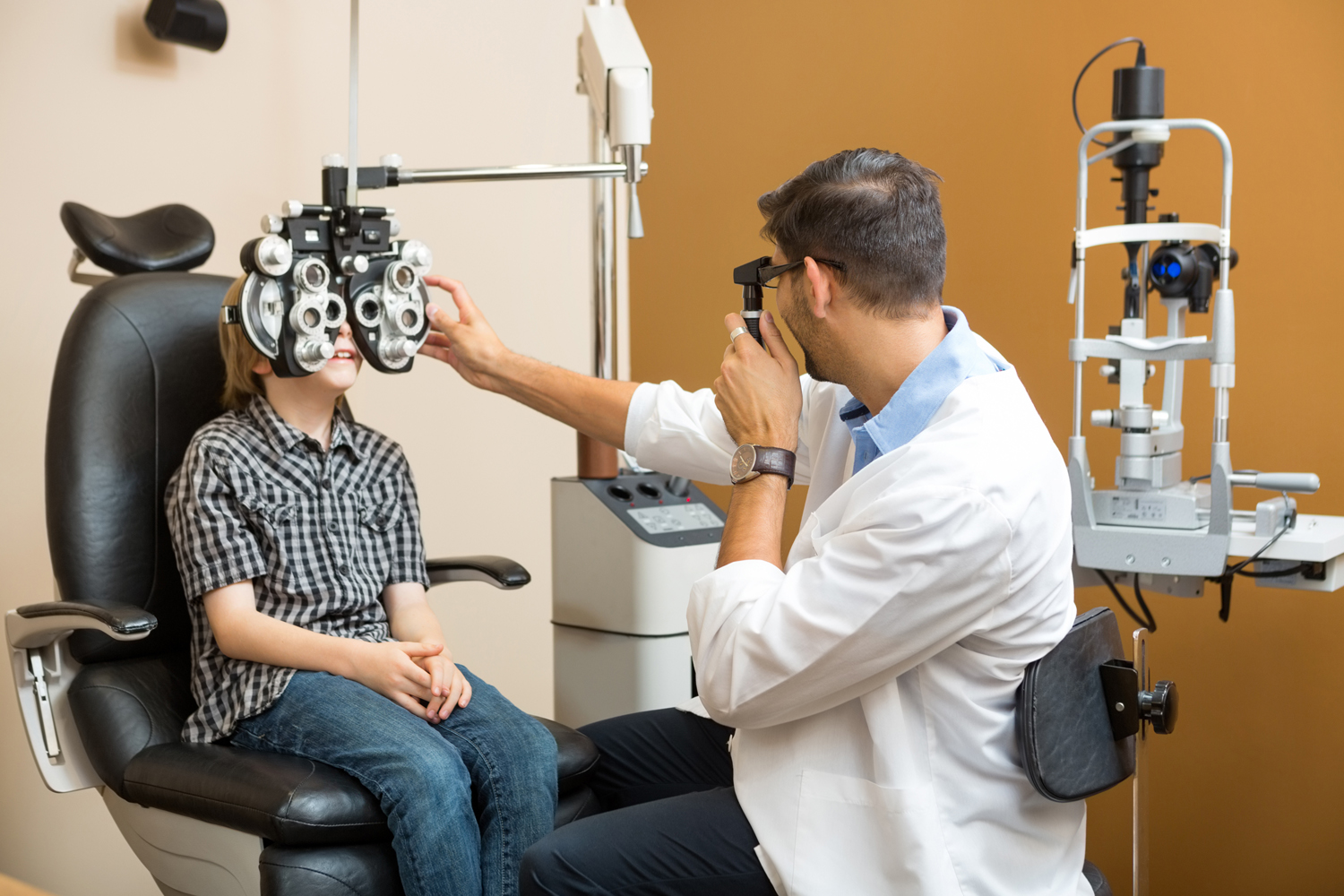Exploring the most up to date Technical Innovations in Optometry and What They Mean for Optometrists
In the ever-evolving field of optometry, current technological innovations are improving how specialists approach eye treatment. From the accuracy of Optical Coherence Tomography to the nuanced insights supplied by AI-driven diagnostic tools, these technologies are setting new criteria in individual assessment and therapy. Teleoptometry is poised to redefine access, guaranteeing that knowledge transcends geographical restrictions. As these innovations permeate the technique, optometrists are faced with the difficulty of accepting these tools to boost patient results. The question continues to be: how will these technical changes redefine the functions and obligations within the occupation?
Developments in Diagnostic Tools
Advancing the field of optometry, technologies in analysis devices have reinvented the means eye care experts assess and detect eye problems and visual impairments. The past decade has actually observed substantial technological developments, making it possible for even more detailed and accurate examinations. Optical Comprehensibility Tomography (OCT), for example, provides high-resolution cross-sectional pictures of the retina, enabling the early detection of diseases such as glaucoma and age-related macular degeneration. This non-invasive imaging technique has actually come to be essential in contemporary optometric method.
An additional trick technology is the intro of advanced corneal topography systems, which map the surface area curvature of the cornea with accuracy. These devices are particularly advantageous for suitable contact lenses and diagnosing corneal problems. Digital retinal imaging has actually transformed conventional ophthalmoscopy, supplying comprehensive, scenic views of the retina that assist in thorough visual examinations.
The growth of wavefront aberrometry has actually also been essential, making it possible for the evaluation of refractive mistakes with unequaled precision (Opticore Optometry). This technology assists in personalizing rehabilitative lenses and enhancing surgical end results for refractive surgeries. Collectively, these analysis advancements empower optometrists to supply superior patient care, guaranteeing early intervention and tailored treatment approaches, eventually boosting aesthetic wellness outcomes
AI in Person Administration
Building on the foundation of cutting-edge diagnostic tools, the incorporation of expert system (AI) in individual monitoring represents a transformative leap for optometry. AI systems are significantly employed to improve performance, precision, and customization in individual care. By analyzing huge amounts of information, AI can determine patterns and anticipate possible ocular conditions, enabling eye doctors to customize interventions better. This capability is vital in taking care of chronic eye diseases such as glaucoma and diabetic retinopathy, where early detection and continuous surveillance are crucial.
Moreover, AI-driven systems help with structured client communications and management procedures. Automated organizing, virtual examinations, and customized follow-up plans not only enhance client contentment yet also maximize time administration for experts. These systems can triage individuals based on the urgency of their conditions, making sure that those in crucial requirement obtain punctual attention.
Additionally, AI enhances decision-making by giving eye doctors with evidence-based suggestions and therapy pathways. By integrating information from electronic health and wellness documents, AI devices supply understandings that inform scientific decisions, minimizing the danger of errors and enhancing patient results. As AI proceeds to progress, its duty in individual monitoring will likely expand, improving the landscape of optometric care.
Developments in Retinal Imaging
In the world of optometry, retinal imaging has experienced impressive technical advancements find that are improving diagnostic capabilities and client treatment. Developments such as Optical Coherence Tomography (OCT) and fundus photography have actually reinvented exactly how eye doctors examine the retina and envision.
Enhanced imaging methods like OCT angiography are more refining diagnostic accuracy. This non-invasive technique maps blood circulation in the retina, providing critical insights right into vascular wellness without the need for color shots. Additionally, flexible optics modern technology is being integrated right into retinal imaging systems to remedy eye aberrations, supplying unmatched image clearness. Such improvements promote the recognition of min retinal modifications that might symbolize condition development.
Additionally, advancements in artificial knowledge are increasing retinal imaging by allowing automated analysis of huge datasets. These systems help eye doctors in identifying patterns a measure of pathology, thereby boosting analysis precision and efficiency. Jointly, these advancements are transforming retinal imaging into a cornerstone of contemporary eye treatment, boosting results and expanding healing possibilities.
Teleoptometry's Growing Role
Teleoptometry is increasingly becoming a vital part of eye treatment, driven by advancements in electronic interaction and analysis tools. As optometry embraces digital makeover, teleoptometry helps with remote examinations, allowing eye doctors to prolong their solutions past typical boundaries. This is specifically valuable in underserved and country locations where access to specialized eye treatment is commonly minimal. By leveraging high-resolution video clip conferencing and advanced retinal imaging, optometrists can perform extensive eye tests from afar, making certain prompt diagnosis and therapy.
The assimilation of fabricated knowledge (AI) more enhances teleoptometry, making it possible for the analysis of aesthetic data and aiding in the discovery of ocular problems such as glaucoma and diabetic person retinopathy. AI-powered algorithms can rapidly translate intricate imaging data, providing eye doctors with important understandings that strengthen clinical decision-making.
Additionally, teleoptometry supports connection of care via seamless integration with electronic health and wellness documents (EHRs), permitting eye doctors to keep thorough individual histories. This makes sure that individuals obtain individualized and regular treatment also when speaking with various experts.
Despite these benefits, challenges stay, consisting of ensuring information safety and security and handling person expectations. Teleoptometry stands for a considerable stride in the direction of even more available, reliable, and patient-centered eye treatment. As modern technology evolves, its role is positioned to broaden even more.

Future Patterns in Eye Care
A myriad of ingenious my sources fads is set to reshape the future of eye care, driven by technological developments and the progressing demands of people. One significant pattern is the combination of expert system (AI) in diagnostics, which promises to improve the precision and effectiveness of eye examinations. AI formulas can analyze large quantities of information from retinal photos, possibly spotting conditions like diabetic retinopathy and glaucoma earlier than important link typical techniques.
Additionally, tailored medication is obtaining grip in optometry, with hereditary testing notifying personalized treatment plans. This technique aims to optimize individual outcomes by customizing treatments to private hereditary accounts. Wearable technology, such as smart contact lenses, is likewise on the perspective, supplying real-time surveillance of intraocular stress or glucose levels, therefore giving continuous insights right into ocular and systemic wellness.
The adoption of augmented fact (AR) and virtual fact (VIRTUAL REALITY) in training and patient education is one more emerging fad. These modern technologies offer immersive experiences that can improve understanding and skills both for individuals and eye doctors. As these patterns advance, optometrists must stay abreast of technical improvements to offer innovative care, ensuring improved client end results and satisfaction in the dynamic landscape of eye care.
Final Thought

Collectively, these analysis developments encourage optometrists to deliver superior individual treatment, guaranteeing early treatment and tailored therapy strategies, eventually improving aesthetic health and wellness results.

As these innovations continue to progress, optometrists need to adjust and include them right into practice, eventually enhancing operations efficiency and raising the requirement of eye care delivered to people.